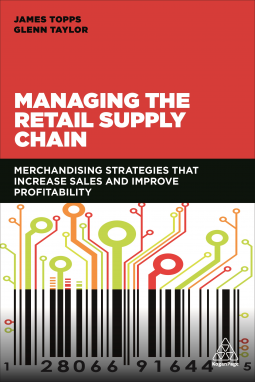
Managing the Retail Supply Chain
Merchandising Strategies that Increase Sales and Improve Profitability
by James Topps; Glenn Taylor
This title was previously available on NetGalley and is now archived.
Send NetGalley books directly to your Kindle or Kindle app
1
To read on a Kindle or Kindle app, please add kindle@netgalley.com as an approved email address to receive files in your Amazon account. Click here for step-by-step instructions.
2
Also find your Kindle email address within your Amazon account, and enter it here.
Pub Date Jan 03 2018 | Archive Date Jan 30 2018
Kogan Page Ltd | Kogan Page
Talking about this book? Use #ManagingTheRetailSupplyChain #NetGalley. More hashtag tips!
Description
Buying, merchandising and the supply chain are inextricably linked. Product merchandisers play a key role within retail, as profits can be affected by how successfully they undertake their work. Merchandisers set prices to maximise profits and manage the performance of ranges, planning promotions and mark-downs as necessary. They also oversee delivery and distribution of stock and deal with suppliers. Their connection with and understanding of the supply chain is vital. Supported by theories, explanations and real-life examples, Managing the Retail Supply Chain looks at concepts and core themes that run across all sectors.
Many businesses use a one-size-fits-all solution for any issues which arise, leading to big problems. Managing the Retail Supply Chain presents numerous examples of different business models adopted by a variety of companies. Covering basic principles of retail supply chain, KPIs, merchandise planning and demand planning as well as omnichannel, vertical integration, on-shelf availability and e-commerce, Managing the Retail Supply Chain is an essential guide for anyone involved in or studying retail supply chains and merchandising.
Available Editions
| EDITION | Other Format |
| ISBN | 9780749480622 |
| PRICE | $62.00 (USD) |
| PAGES | 264 |


















